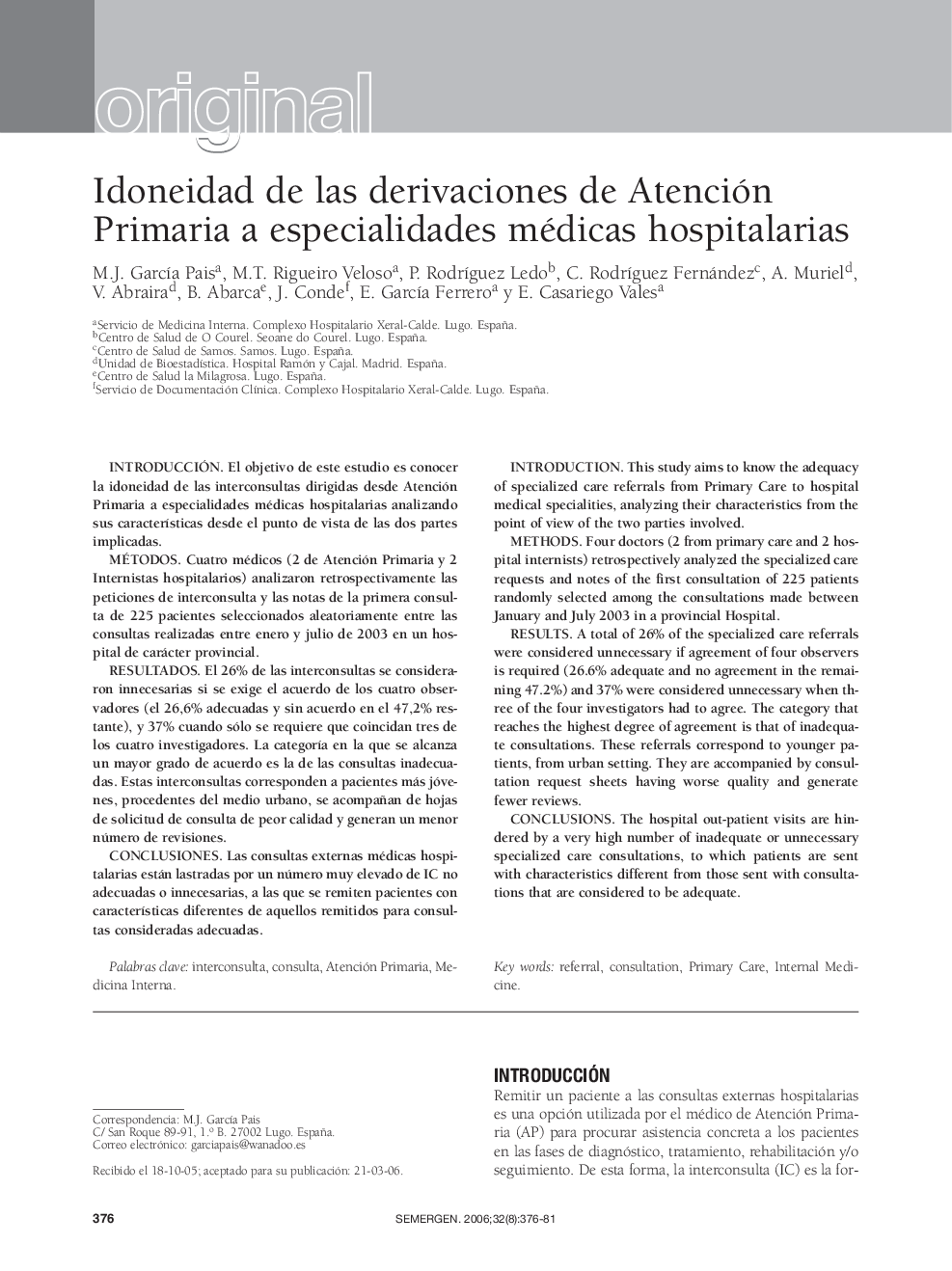| Article ID | Journal | Published Year | Pages | File Type |
|---|---|---|---|---|
| 3835451 | SEMERGEN - Medicina de Familia | 2006 | 6 Pages |
IntroducciónEl objetivo de este estudio es conocer la idoneidad de las interconsultas dirigidas desde Atención Primaria a especialidades médicas hospitalarias analizando sus caracterÃsticas desde el punto de vista de las dos partes implicadas.MétodosCuatro médicos (2 de Atención Primaria y 2 Internistas hospitalarios) analizaron retrospectivamente las peticiones de interconsulta y las notas de la primera consulta de 225 pacientes seleccionados aleatoriamente entre las consultas realizadas entre enero y julio de 2003 en un hospital de carácter provincial.ResultadosEl 26% de las interconsultas se consideraron innecesarias si se exige el acuerdo de los cuatro observadores (el 26,6% adecuadas y sin acuerdo en el 47,2% restante), y 37% cuando sólo se requiere que coincidan tres de los cuatro investigadores. La categorÃa en la que se alcanza un mayor grado de acuerdo es la de las consultas inadecuadas. Estas interconsultas corresponden a pacientes más jóvenes, procedentes del medio urbano, se acompañan de hojas de solicitud de consulta de peor calidad y generan un menor número de revisiones.ConclusionesLas consultas externas médicas hospitalarias están lastradas por un número muy elevado de IC no adecuadas o innecesarias, a las que se remiten pacientes con caracterÃsticas diferentes de aquellos remitidos para consultas consideradas adecuadas.
IntroductionThis study aims to know the adequacy of specialized care referrals from Primary Care to hospital medical specialities, analyzing their characteristics from the point of view of the two parties involved.MethodsFour doctors (2 from primary care and 2 hospital internists) retrospectively analyzed the specialized care requests and notes of the first consultation of 225 patients randomly selected among the consultations made between January and July 2003 in a provincial Hospital.ResultsA total of 26% of the specialized care referrals were considered unnecessary if agreement of four observers is required (26.6% adequate and no agreement in the remaining 47.2%) and 37% were considered unnecessary when three of the four investigators had to agree. The category that reaches the highest degree of agreement is that of inadequate consultations. These referrals correspond to younger patients, from urban setting. They are accompanied by consultation request sheets having worse quality and generate fewer reviews.ConclusionsThe hospital out-patient visits are hindered by a very high number of inadequate or unnecessary specialized care consultations, to which patients are sent with characteristics different from those sent with consultations that are considered to be adequate.
